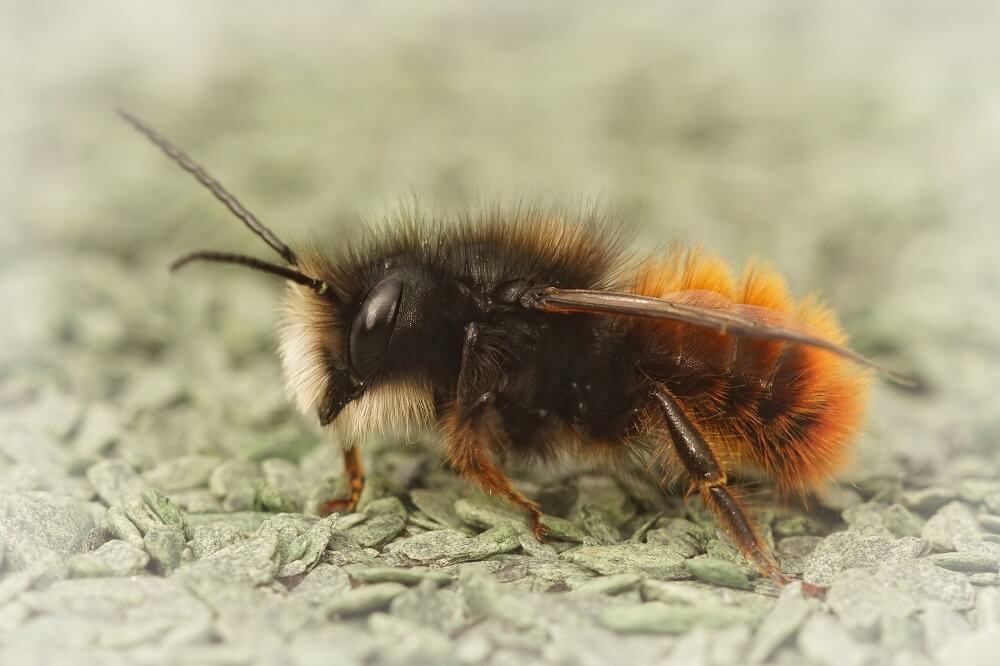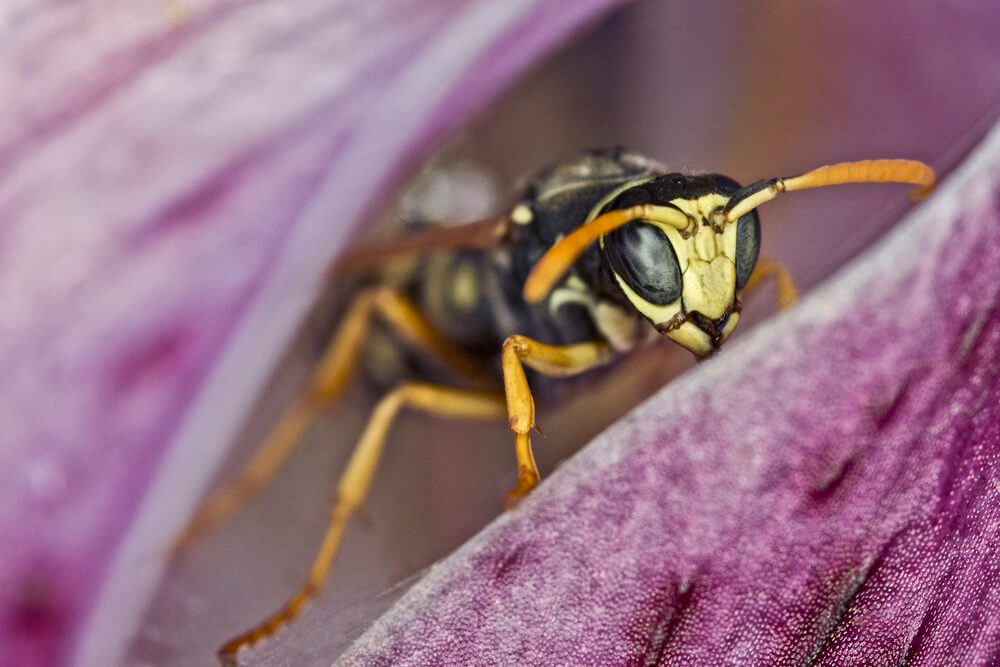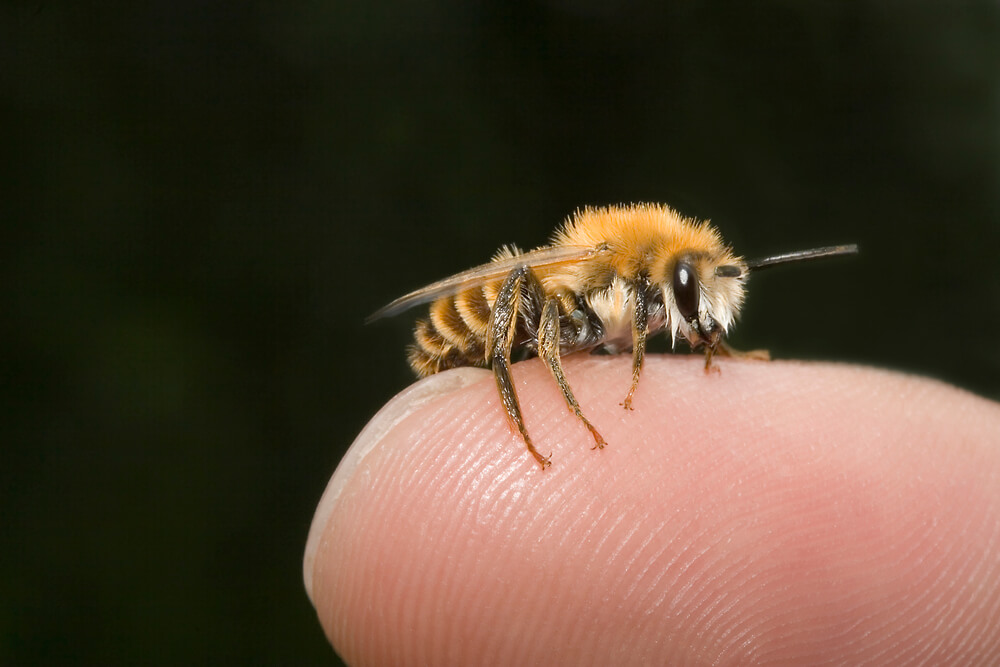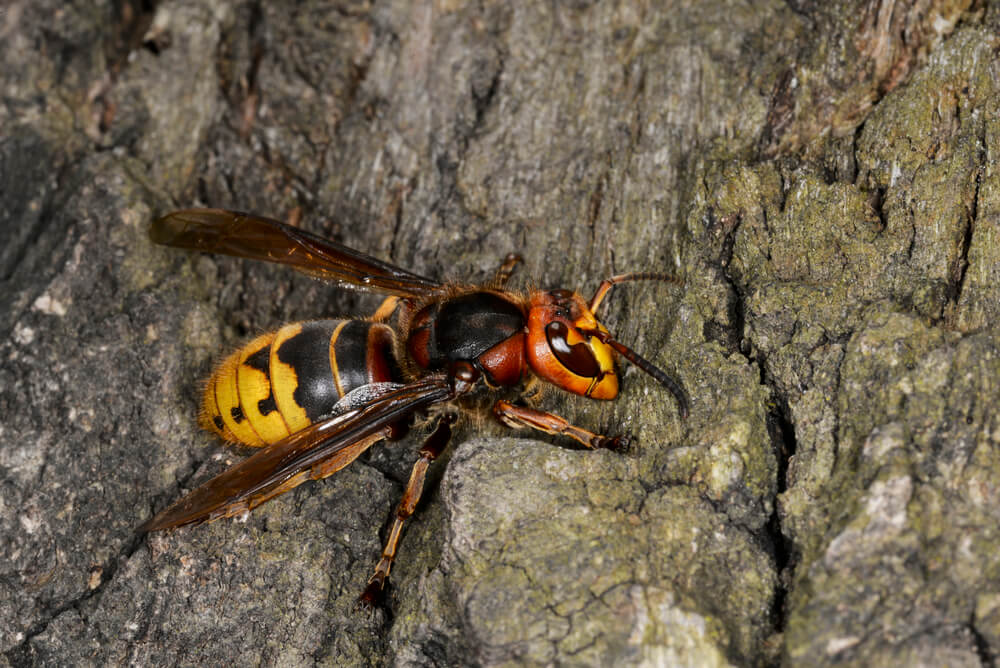15 Fun Facts About Bees:
- Only female bees can sting
- Pollinators are responsible for 1 in every 3 bites of food we eat
- Like humans, bees sleep when they need rest
- Despite popular belief, bees tend to be gentle natured
- Most bees do not die after stinging
- Unlike wasps, bees do not eat meat
- Bees hibernate or go dormant during the winter
- Bees aren’t the only insect that produces honey
- Female bees make up the majority of the beehive
- Carpenter bees are the largest native bees in the US
- Honeybees can have over 50,000 bees in a single hive
- A queen honeybee can lay over 2,000 eggs per day
- There are more than 20,000 bee species
- Bees have five eyes
- Ancient Egyptians used honey as food and medicine
Bee Fact 1: Only Female Bees Can Sting
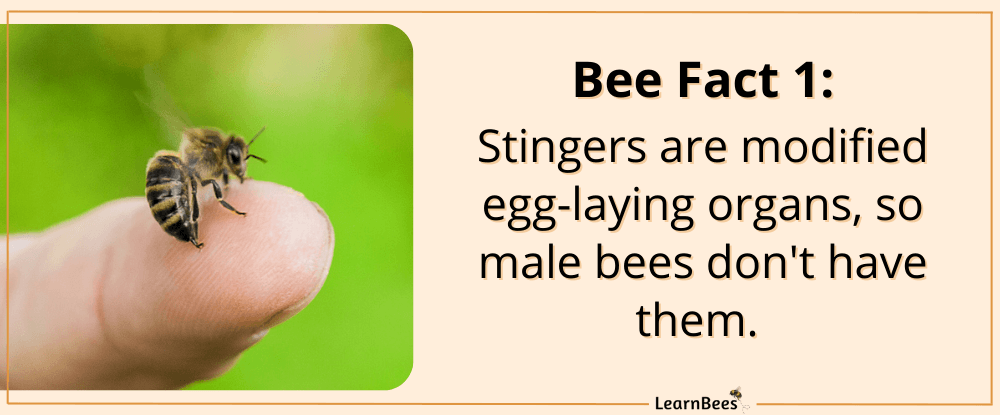
Yup, you read that right.
Stingers are actually modified egg-laying organs, so only female bees have them.
Male bees, or drones, don’t have stingers because they don’t lay eggs. Their sole purpose is to mate with a female bee to ensure the future generation of bees.
So what does this mean?
It means that female bees are responsible for protecting themselves and their hive. Male bees cannot. That said, some species of male bees still try to pull their weight in defending their nests.
For example, male carpenter bees buzz around predators to deter them from their nests. The fact that male carpenter bees don’t have stingers doesn’t stop them from putting on a good show to scare intruders away.
—> Go back to the fun facts about bees
More to Explore:
- Where Do Bumblebees Live?
Bee Fact 2: Pollinators Are Responsible for 1 in Every 3 Bites of Food We Eat

We can thank pollinators for things like coffee, apples, almonds, and even chocolate.
Pollinators, most often honeybees, provide pollination to over 1,200 crops. Certain crops are 90% dependent on bees for pollination, including apples, broccoli, cherries, and blueberries.
But what is a pollinator, you ask?
Pollinators are insects or animals that help plants reproduce by transferring pollen from one flower to another. They do so by collecting pollen on their bodies while drinking nectar from the flowers. As they move between flowers, little grains of pollen get left behind each time.
And voila.
The end result is pollination.
But bees aren’t the only pollinators. Other important pollinators include:
- Butterflies
- Hummingbirds
- Wasps
- Moths
- Beetles
- Flies
- Bats
—> Go back to the fun facts about bees
More to Explore:
- Do Bees Hibernate?
- What are Green Bees?
- The 10 Best Flowering Trees for Bees
Bee Fact 3: Like Humans, Bees Sleep When They Need Rest

Let’s face it.
Bees are hardworking little creatures.
They regularly work 10+ hours daily with no weekends or vacation days off. But bees need sleep too. So after a long day of work, bees head back to their nests to get some shut-eye. Just like us, they need rest to function correctly.
And here’s the thing:
Bees are most active during the day but will also work at night if needed. This typically happens in social bee colonies like honeybee and bumblebee hives.
For example:
A single honeybee colony can have upwards of 50,000 bees in it. Some bees are responsible for collecting nectar and pollen from flowers, while others are responsible for cleaning the nest and making honey.
This means that bees have different schedules depending on their job duties.
Forager bees are active during the day because they work outside the hive, gathering food from flowers. House bees have more flexibility and can work at night because they don’t leave the hive to work. Instead, they stay inside the nest, cleaning and doing various duties.
—> Go back to the fun facts about bees
More to Explore:
- My Dog Ate a Bee! What Should I Do?
- What Are Drone Bees?
- What Do Carpenter Bees Eat?
Bee Fact 4: Despite Popular Belief, Most Bees Are Gentle Natured
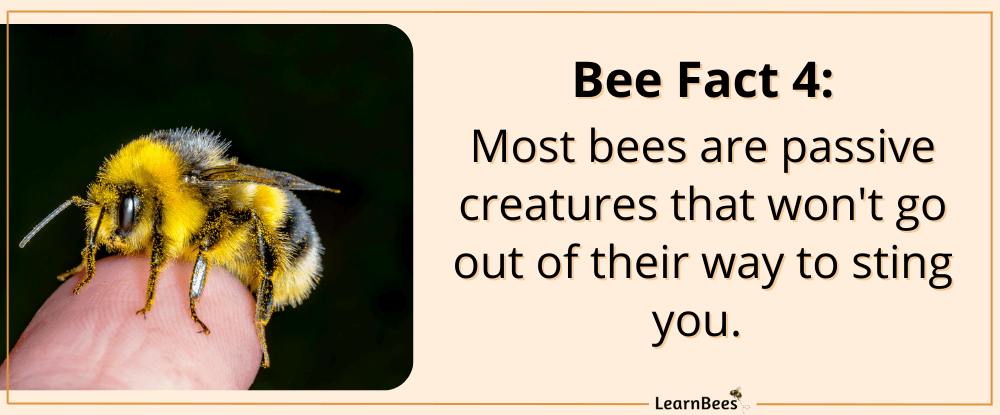
Bees get a bad rap as being aggressive.
They are not.
Instead, bees are typically only protective when it comes to their nests. This is why bees usually won’t disturb you when they’re buzzing around flowers – they’re away from their hives and have nothing to defend.
The truth is?
Bees aren’t interested in humans. They’re more interested in doing their daily tasks and avoiding trouble. So you typically have nothing to worry about if you aren’t poking around their nests or trying to harm them.
Here’s our best tip:
Be aware of any bee nests on your property. This way, you can keep pets and children from accidentally disturbing the important little pollinators.
—> Go back to the fun facts about bees
More to Explore:
- How Do Bees Reproduce?
- Is Honey Bee Vomit?
- Wasp Nest vs. Bee Nest
Bee Fact 5: Most Bees Do Not Die After Stinging
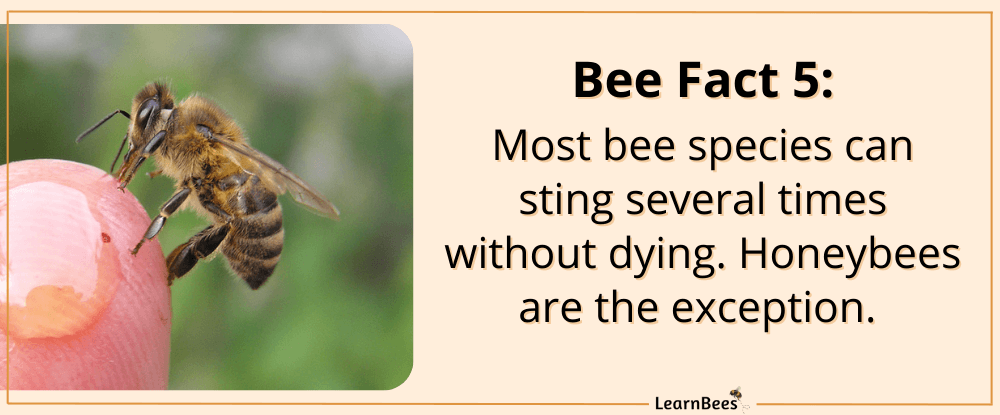
One of the biggest bee myths is that they all die after stinging humans.
This simply isn’t true.
Bumblebees, carpenter bees, and many other types of bees can sting multiple times without dying. This is because their stingers don’t get stuck behind in human skin after stinging. As a result, they get to keep their stingers and live to see another day.
But honeybees aren’t so lucky.
Honeybees are one of the only types of bees that die after stinging humans. This is because their stingers are actually barbed with little “hooks” on them. So when they try to pull away after stinging, the stinger gets lodged inside human skin.
Here’s the problem with that:
Once the honeybee tries to fly away, her stinger gets pulled out and rips out her other internal organs. The end result is death.
The only way to prevent this is to allow the honeybee two to three minutes to gently work herself free, so she doesn’t lose her stinger.
—> Go back to the fun facts about bees
More to Explore:
- Carpenter Bee vs. Bumble Bee
- The Best Essential Oils for Bee Stings
- Do All Bees Make Honey?
Bee Fact 6: Unlike Wasps, Bees Do Not Eat Meat
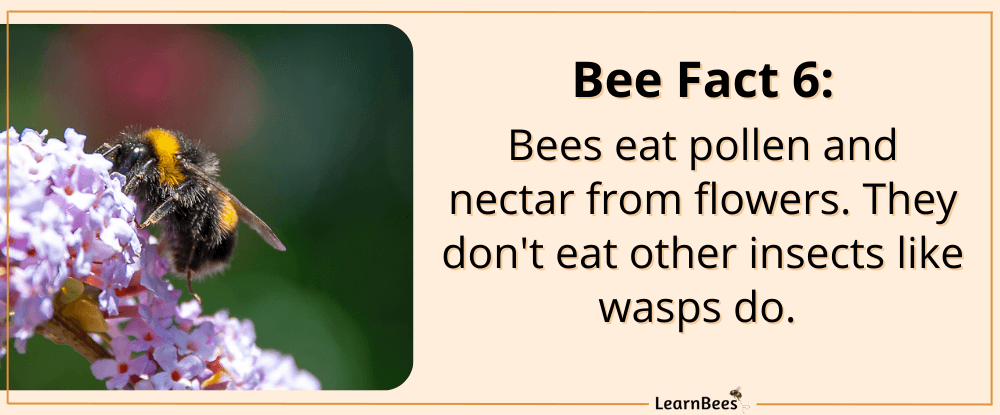
Bees are vegetarian creatures that rely on flowers for food.
Nectar is their natural carbohydrate source, while pollen provides them with protein and other essential nutrients. This is why bees are constantly seen flying from flower to flower – they’re looking for food.
On the other hand, wasps are carnivorous creatures that hunt other insects for food. They feed meat to their young, which is why they’re often seen preying on caterpillars and other small insects.
But as with anything, there are a few exceptions to this rule.
Vulture bees are one species of bee that have evolved to eat meat for their protein source. You can read more about vulture bees here.
—> Go back to the fun facts about bees
More to Explore:
- What Do Bumble Bees Eat?
- How Many Eyes Does a Bee Have?
- How Fast Can a Bee Fly?
Bee Fact 7: Bees Hibernate or Go Dormant During the Winter
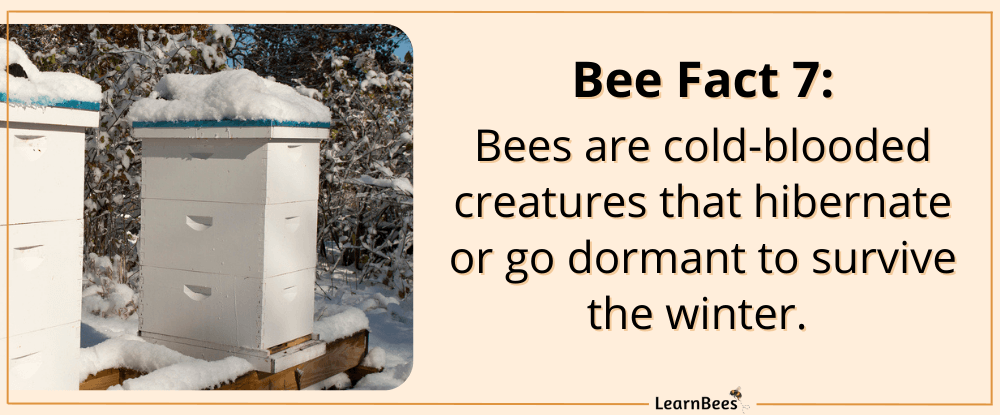
Did you know that bees are cold-blooded creatures?
For this reason, a bee’s peak seasons are spring and summer, when the weather is warm and plenty of flowers bloom.
During the winter, when there aren’t many flowers blooming, bees enter a state of dormancy or hibernation.
Honeybees can survive the winter by clustering together in their hives. They form a big “huddle” and vibrate their wings to generate heat.
Other types of bees, like queen bumblebees, hibernate until spring arrives. They don’t eat nor drink, and their heart rate slows down during this time.
—> Go back to the fun facts about bees
More to Explore:
- Do Bees Eat Honey?
- Carpenter Bee vs. Bumble Bee
- How Many Wings Does a Bee Have?
Bee Fact 8: Bees Aren’t the Only Insect That Produces Honey
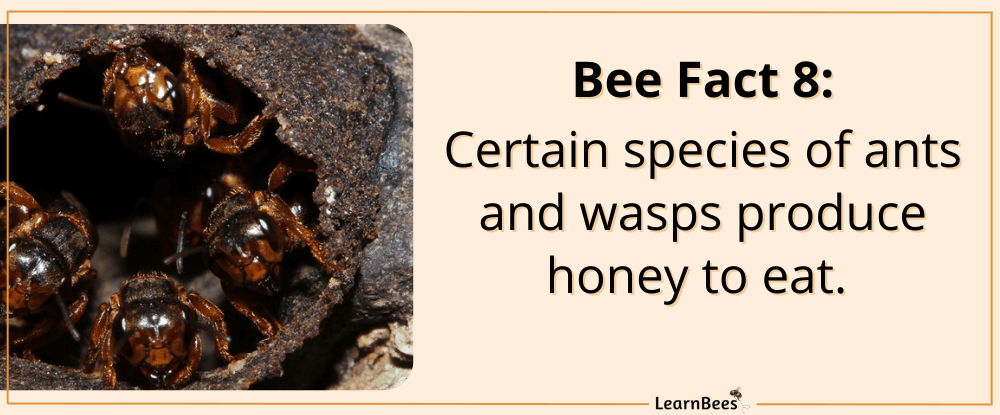
While bees are the most popular insect associated with honey, they’re not the only ones that produce it.
In fact, certain species of wasps and ants also produce honey.
However, the honey produced by these insects is not nearly as much as that produced by honeybees. A healthy honeybee colony can make over 100 pounds of honey per year.
As a result, the honey you purchase comes solely from honeybees because other insects don’t make enough honey for human consumption.
—> Go back to the fun facts about bees
More to Explore:
- Ground Bees: Are They a Threat to Your Yard?
- Wasps vs. Honeybees: Are They Different?
- Do Bumble Bees Bite?
Bee Fact 9: Female Bees Make up the Majority of Beehives
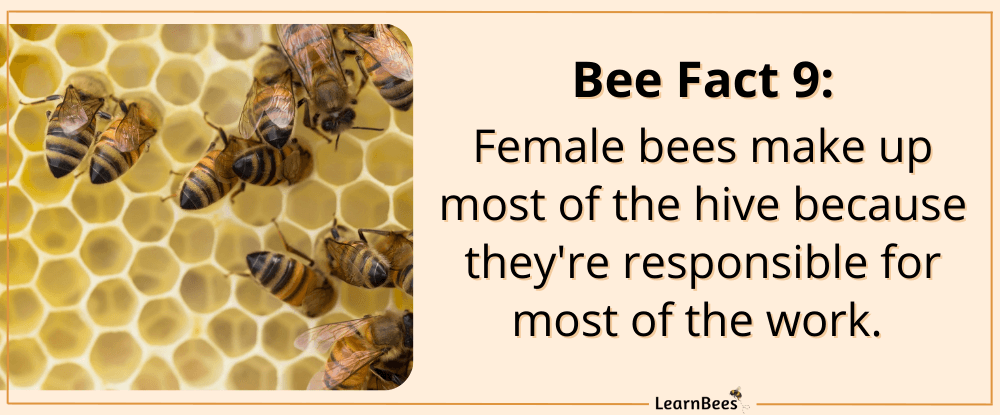
Most social bee colonies are made up of more than 80% females.
How come, you ask?
Because female bees are responsible for the bulk of the heavy lifting for the hive. Female bees feed, clean, and protect their nests. They also decide when to replace the queen or swarm to a new nesting spot.
In contrast, most male bees have one job:
To mate.
As such, large numbers of male bees aren’t needed like they are for female bees.
That said, male bees are still crucial for bee survival. Mating is an important job that ensures the future generation of bees. Bees wouldn’t exist without the help of both male and female bees working together.
—> Go back to the fun facts about bees
More to Explore:
- Do Sweat Bees Sting or Bite?
- Do Bees Have Lungs?
- Why Do Vulture Bees Eat Rotting Flesh?
Bee Fact 10: Carpenter Bees Are the Largest Native Bees in the US
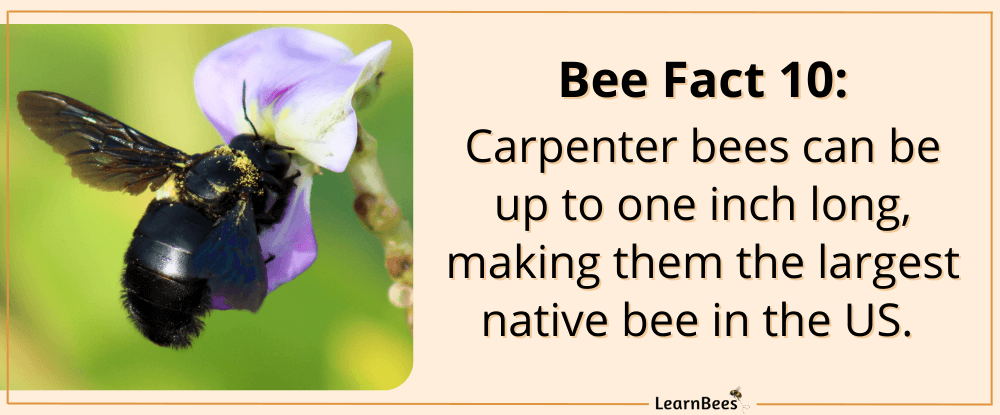
Carpenter bees can be up to one inch long and resemble bumblebees. The main physical difference is that bumblebees are covered in hair, while carpenter bees are less hairy and shiny.
Carpenter bees get their name from their nesting habits. These bees drill holes into wood to create a place to lay their eggs and raise their young.
But remember:
Carpenter bees are vital pollinators that are crucial to our ecosystems.
You can deter carpenter bees naturally by spraying almond oil or citrus oil around areas of exposed wood.
—> Go back to the fun facts about bees
More to Explore:
- Do Carpenter Bees Pollinate?
- How Long Do Bumble Bees Live?
- Honeybees vs. Bumblebees: How Do They Compare?
Bee Fact 11: Honeybees Can Have Over 50,000 Bees in a Single Hive
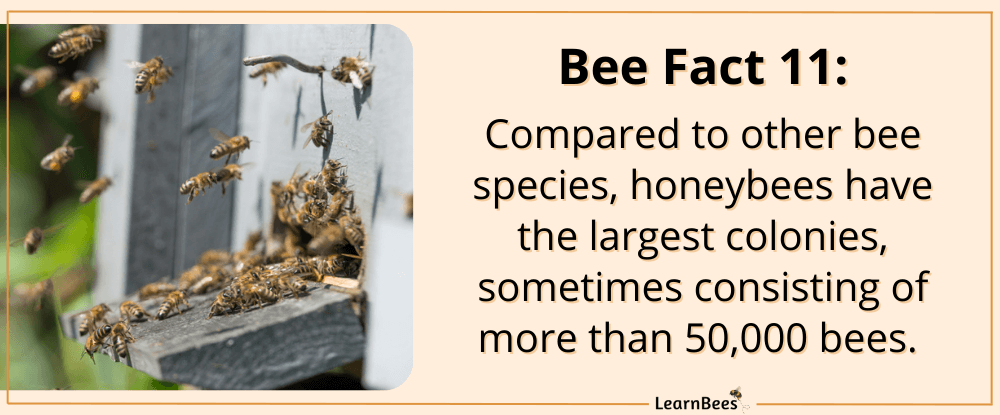
Honeybees are some of the most social creatures on the planet.
A strong and healthy honeybee colony can have over 50,000 honeybees working together like a strong family unit.
Compare that to bumblebees.
A bumblebee colony will only have between 50-500 bumblebees in it.
However, social bee colonies all have a few things in common. For instance, social bee species have hives consisting of a queen bee, worker bees, and drone bees.
Queen bees are responsible for laying eggs, drones (males) are responsible for mating, and workers (females) are responsible for cleaning, feeding, and protecting the nest. In a nutshell, bee colonies are run like well-oiled machines, with every bee performing a particular task it was born to do.
—> Go back to the fun facts about bees
More to Explore:
- Do Queen Bees Eat Honey?
- Are Worker Bees Male or Female?
- Queen Bee Versus Worker Bees – How Do They Compare?
Bee Fact 12: A Queen Honeybee Can Lay Over 2,000 Eggs per Day
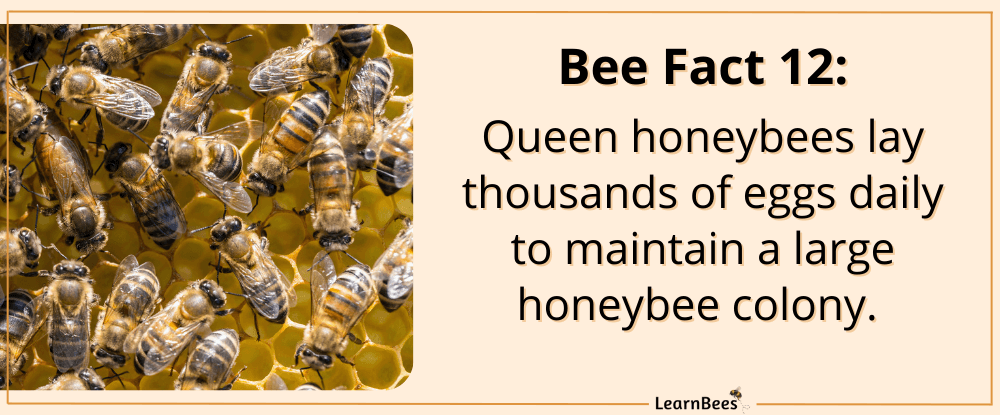
As mentioned, honeybees have the largest colonies of any other type of bee species. During the warm months, there can be upwards of 50,000 honeybees per colony.
But here’s the thing:
Hundreds of worker honeybees die per day. A busy queen honeybee must replace such losses, so the colony population doesn’t dip too low.
Because of this, the queen honeybee is too busy laying eggs to do much else. That’s why worker bees handle her every need, including feeding, cleaning, and protecting her.
More importantly?
If the queen honeybee’s health declines, she’ll soon be replaced with a new queen bee. Worker bees can sense when their queen is getting too old or sick, so they’ll begin raising a new queen to take her place.
Queen bees are the longest living member of the colony, with an average lifespan of 2-4 years.
—> Go back to the fun facts about bees
More to Explore:
- How Do You Plant a Bee Garden?
- How to Identify & Remove a Bees Nest
- What Are Black Honeybees?
Bee Fact 13: There Are More Than 20,000 Bee Species
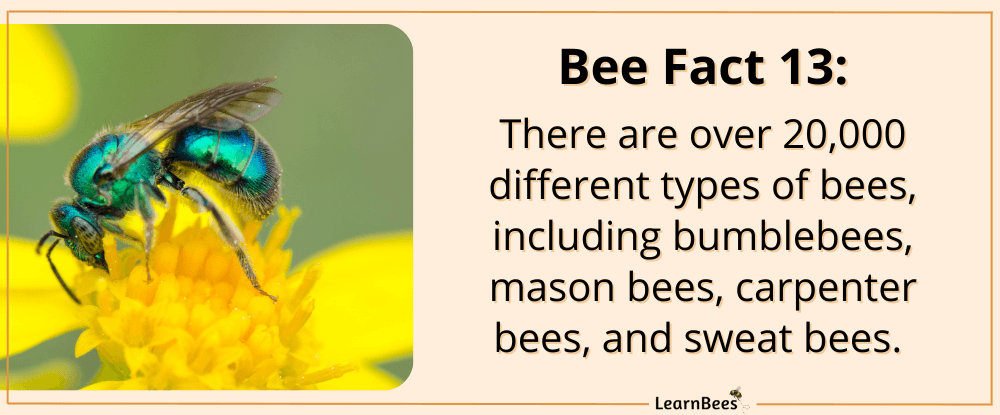
When people think of types of bees, honeybees and bumblebees are usually the first examples that come to mind.
But there are over 20,000 different species of bees, including mason bees, carpenter bees, leafcutter bees, and sweat bees.
And interestingly enough, not all bees live in social colonies with other bees. In fact, most bee species are actually solitary creatures.
Solitary bees live alone, and they don’t have the same complex social structure as social bee species. Instead, each bee is responsible for taking care of itself and its own offspring – without the help of other bees.
In contrast, social bees live in large colonies with hundreds, or even thousands, of other bees. Social bee colonies are made up of a queen, worker bees, and drone bees.
—> Go back to the fun facts about bees
More to Explore:
- What is a Baby Bee?
- What is Bees Bread?
- What Are Honey Making Bees?
Bee Fact 14: Bees Have Five Eyes
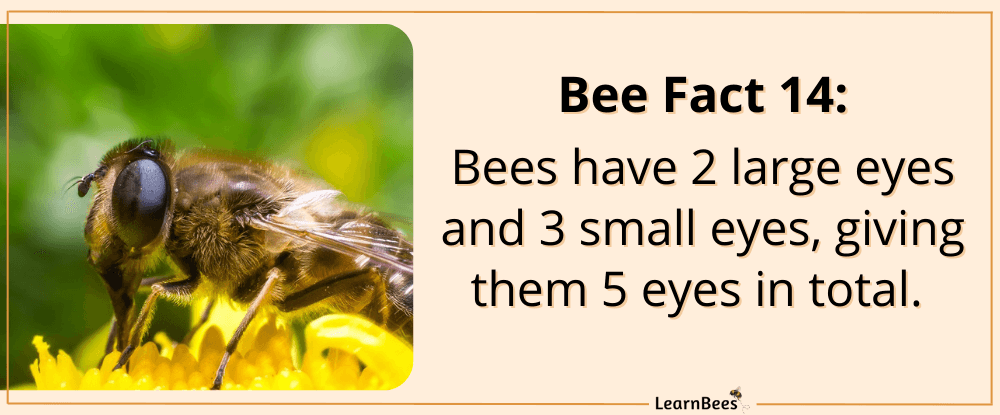
Bees have five eyes, but they don’t see the way we do.
Two of their eyes are large compound eyes that sit on either side of their head. These eyes are made up of thousands of tiny lenses, which give bees a wide field of view.
Bees also have three small eyes in the center of their head, which are called ocelli.
Ocelli are used for stability, navigation, and orientation. Using their ocelli, bees can detect ultraviolet light, which allows them to find flowers more easily.
—> Go back to the fun facts about bees
More to Explore:
- What Do Bees Use Pollen For?
- Beehive on Ground: Are They a Problem?
- Bees Color: 10+ Types of Colored Bees With Pictures
Bee Fact 15: Ancient Egyptians Used Honey as Food and Medicine
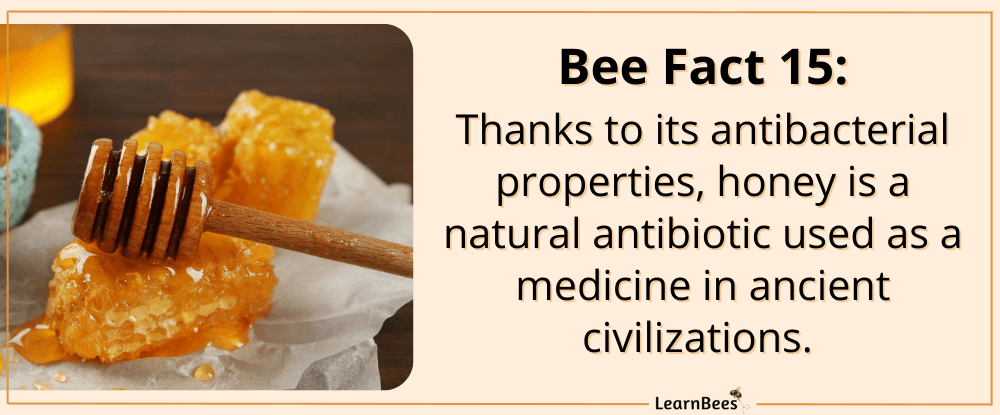
Bees have been around for a long time – even the ancient Egyptians used honey as both food and medicine.
This is because honey is naturally antibacterial, antiviral, and antifungal. It also contains antioxidants, which can help reduce inflammation. Because of these properties, honey has been used to treat various ailments for centuries.
For example, honey has been used to treat sore throats, wounds, and digestive issues. It’s even been effective in treating more severe conditions like diabetes-related foot ulcers, psoriasis, and eczema.
—> Go back to the fun facts about bees
